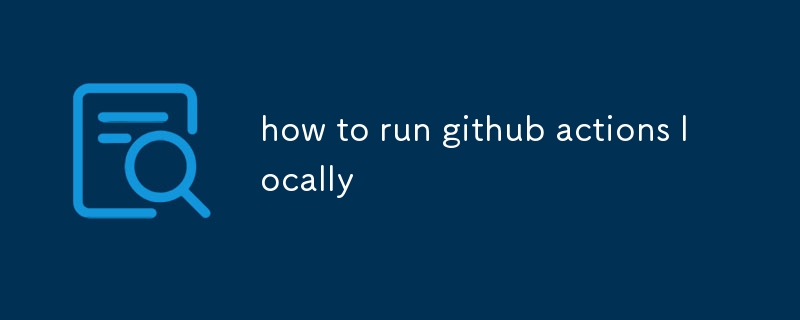
This article discusses the benefits and setup process for running GitHub Actions locally. Local execution allows for faster feedback, easier debugging, and greater control over the execution environment. It explains the installation and configuration

GitHub Actions are automated tasks that you can run in your repository. You can use GitHub Actions to build, test, and deploy your code, as well as to perform other tasks such as sending notifications or creating issues.
Running GitHub Actions locally can be helpful for testing and debugging your actions before you commit them to your repository. It can also be helpful for running actions on a specific machine or environment.
There are several benefits to running GitHub Actions locally, including:
To set up your local environment to run GitHub Actions, you'll need to install the GitHub Actions runner. The runner is a program that runs your actions on your local machine.
Once you've installed the runner, you'll need to configure it to run actions from your repository. To do this, you'll need to create a runner token and add it to your repository's secrets.
Once you've configured the runner, you can start running actions locally. To do this, you'll need to create a workflow file and add it to your repository. A workflow file is a YAML file that defines the actions that you want to run and the conditions under which they should run.
Once you've created a workflow file, you can run it locally by using the github-actions run command. This command will run the workflow file on your local machine and display the results.
Here are some best practices for running GitHub Actions locally:
The above is the detailed content of how to run github actions locally. For more information, please follow other related articles on the PHP Chinese website!




